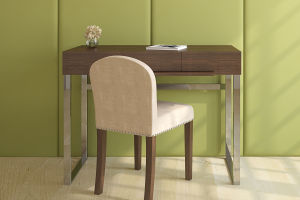In recent years, with the rapid development of the nail industry, nail beauty has expanded beyond the traditional application of nail polish.
The rise in popularity of wearable nails has led many to wonder: Will nail polish eventually be phased out?
This question highlights the tension between innovation and tradition, while also reflecting a societal shift towards prioritizing convenience over personalization in the pursuit of beauty.
The history of nail polish stretches back thousands of years. In ancient China, nobles used natural plants and minerals to adorn their nails. By the 20th century, the cosmetics industry had matured, and advancements in chemical technology greatly improved the color, texture, and variety of nail polishes available.
Nail polish became a powerful tool for women to express themselves and enhance their appearance. Over time, applying nail polish became a common beauty ritual for many.
The lasting appeal of nail polish lies in its diversity. It comes in a wide range of colors, textures, and finishes. These can be switched according to seasons, fashion trends, or moods, allowing for endless personalization.
Additionally, many brands have introduced "quick-drying," "environmentally friendly," and "breathable" formulas to attract health-conscious consumers. However, despite continued market growth, the nail polish industry now faces increasing competition from alternative nail art methods.
In recent years, wearable nails, have gained popularity, bringing more convenience and variety to the nail art scene. Originally used only for special occasions or performances, wearable nails have now found a place in everyday life. Compared to nail polish, these artificial nails offer several distinct advantages.
First, wearable nails eliminate the time-consuming process of applying, drying, and correcting nail polish. In today’s fast-paced world, many people find it difficult to set aside time for nail care.
Wearable nails, on the other hand, can be applied in just a few minutes, providing an easy solution for those looking for a polished, professional look without the hassle.
Moreover, these nails often feature intricate designs and styles that are difficult, if not impossible, to achieve with traditional nail polish. For instance, they can showcase three-dimensional effects, detailed patterns, or smooth gradient colors.
Another major advantage of wearable nails is their durability. Traditional nail polish, even when protected by topcoats and base coats, is prone to chipping, fading, and cracking through the wear and tear of daily activities.
Wearable nails, made from specialized materials, can last for several days or even weeks without significant damage. This appeals to individuals who lead busy lives but still want to maintain the appearance of freshly done nails.
Despite the convenience and benefits of wearable nails, the question remains: will they completely replace nail polish? The answer is not so straightforward. Based on current market trends, it seems that both wearable nails and nail polish cater to different audiences, and both are likely to coexist in the foreseeable future.
One reason nail polish is unlikely to disappear is the ritualistic and relaxing nature of applying it. For many, the process of painting their nails offers a moment of self-care, creativity, and focus—an experience that wearable nails simply cannot replicate.
Furthermore, nail polish is relatively inexpensive and can be reused multiple times, offering consumers the flexibility to change colors and styles frequently, often depending on their mood or the occasion.
Wearable nails, while convenient, also have their drawbacks. Due to size and shape constraints, many artificial nails do not fit perfectly on every individual’s nails, sometimes resulting in an unnatural appearance or discomfort.
In contrast, nail polish allows for complete customization, as it can be applied and adjusted to fit each person’s unique nail shape and size, offering a more personalized experience.
Ultimately, while wearable nails have undoubtedly brought new energy to the nail art market, they are unlikely to completely replace nail polish. Each option has its own set of advantages and caters to different consumer needs.
In the future, wearable nails and nail polish are likely to coexist, with continuous technological innovations and design advancements pushing both forms forward. Together, they will evolve to meet the growing and changing demands of beauty enthusiasts.
This ongoing integration and innovation are poised to become the defining trends in the nail industry, allowing people to choose between the convenience of wearable nails and the creative satisfaction of nail polish.
As both methods develop, they will likely promote one another, offering consumers more diverse and exciting ways to express their style and beauty preferences.


